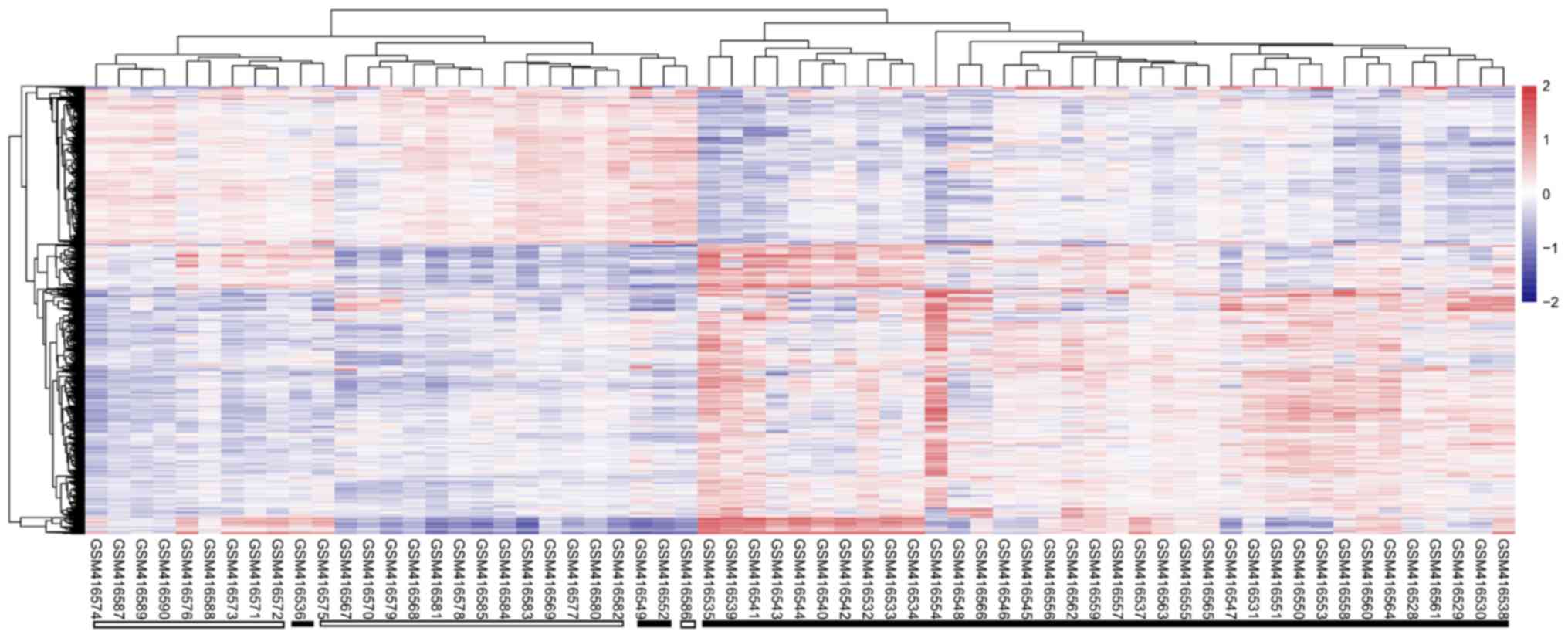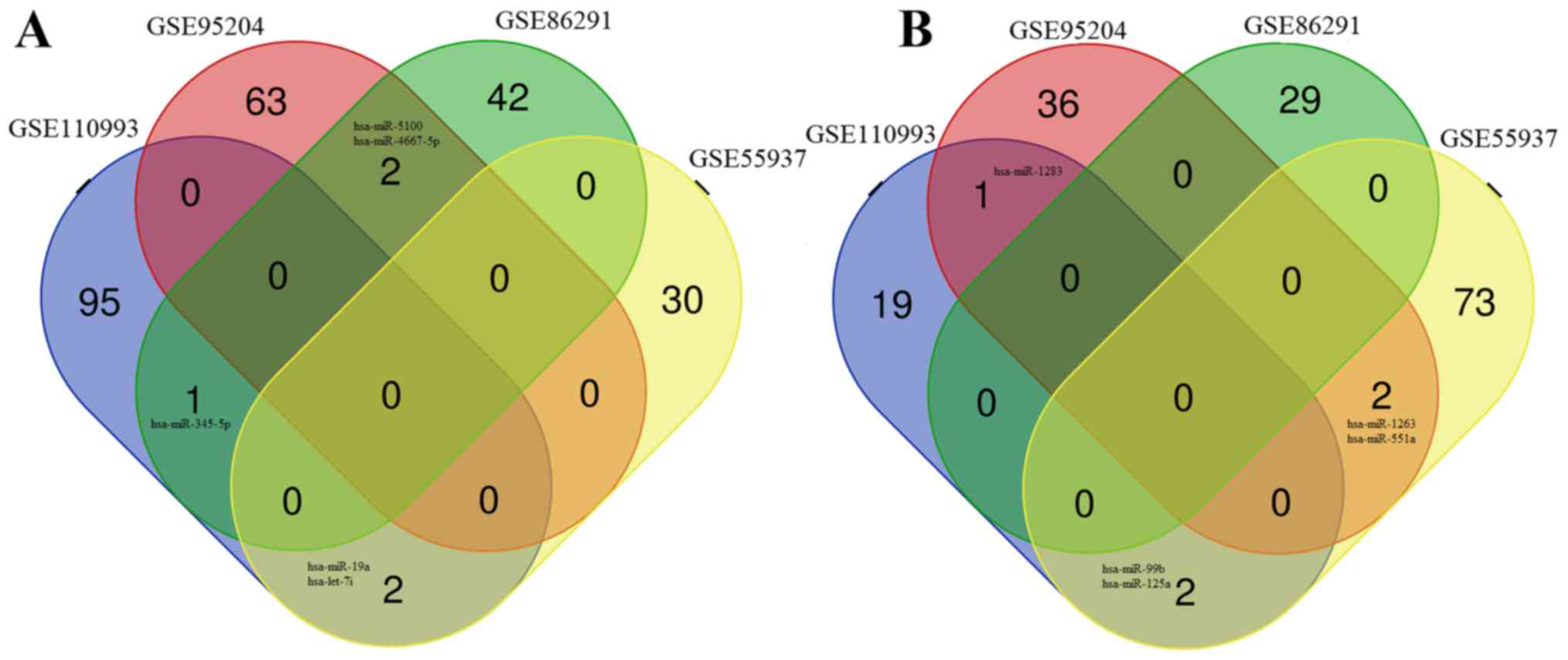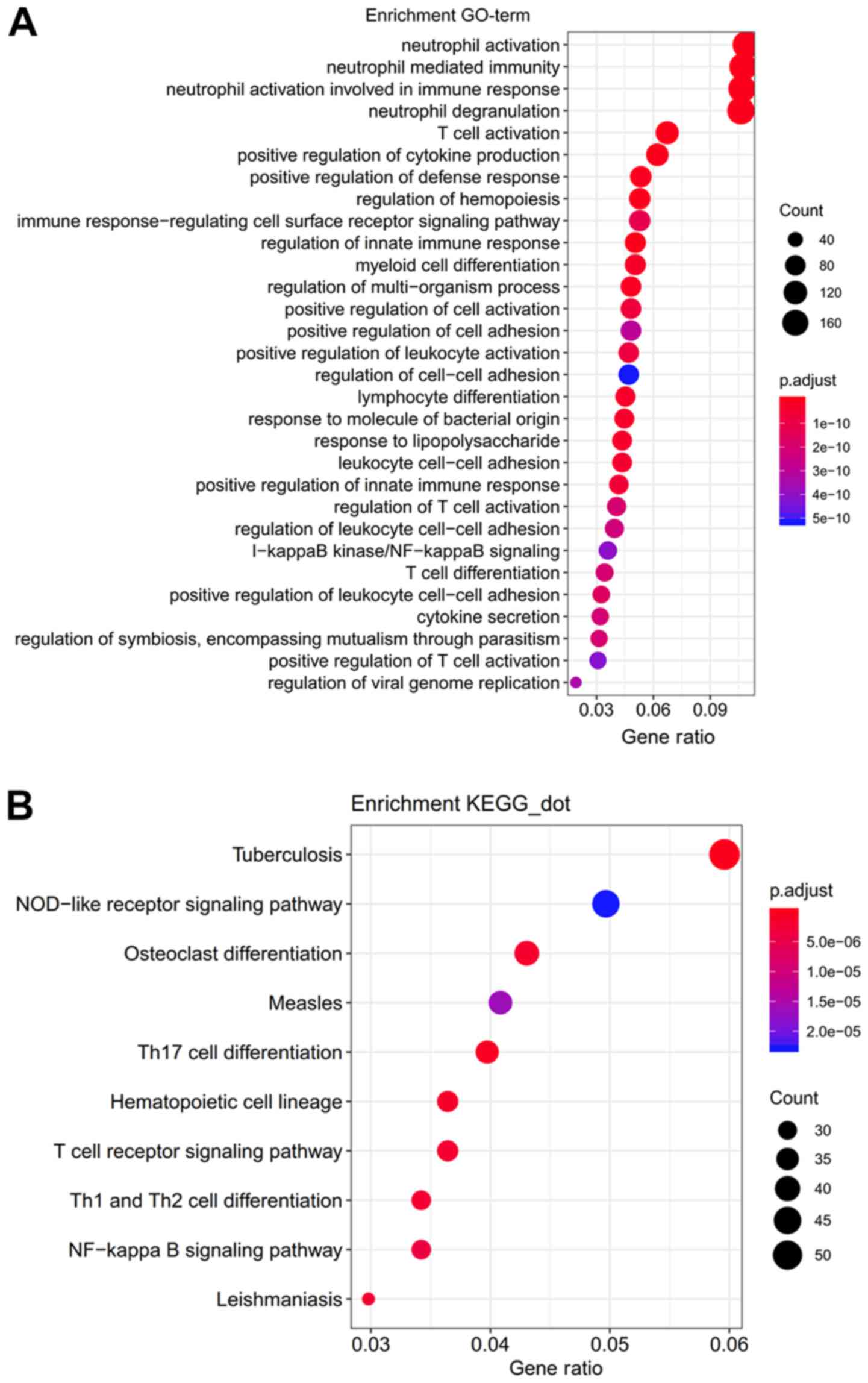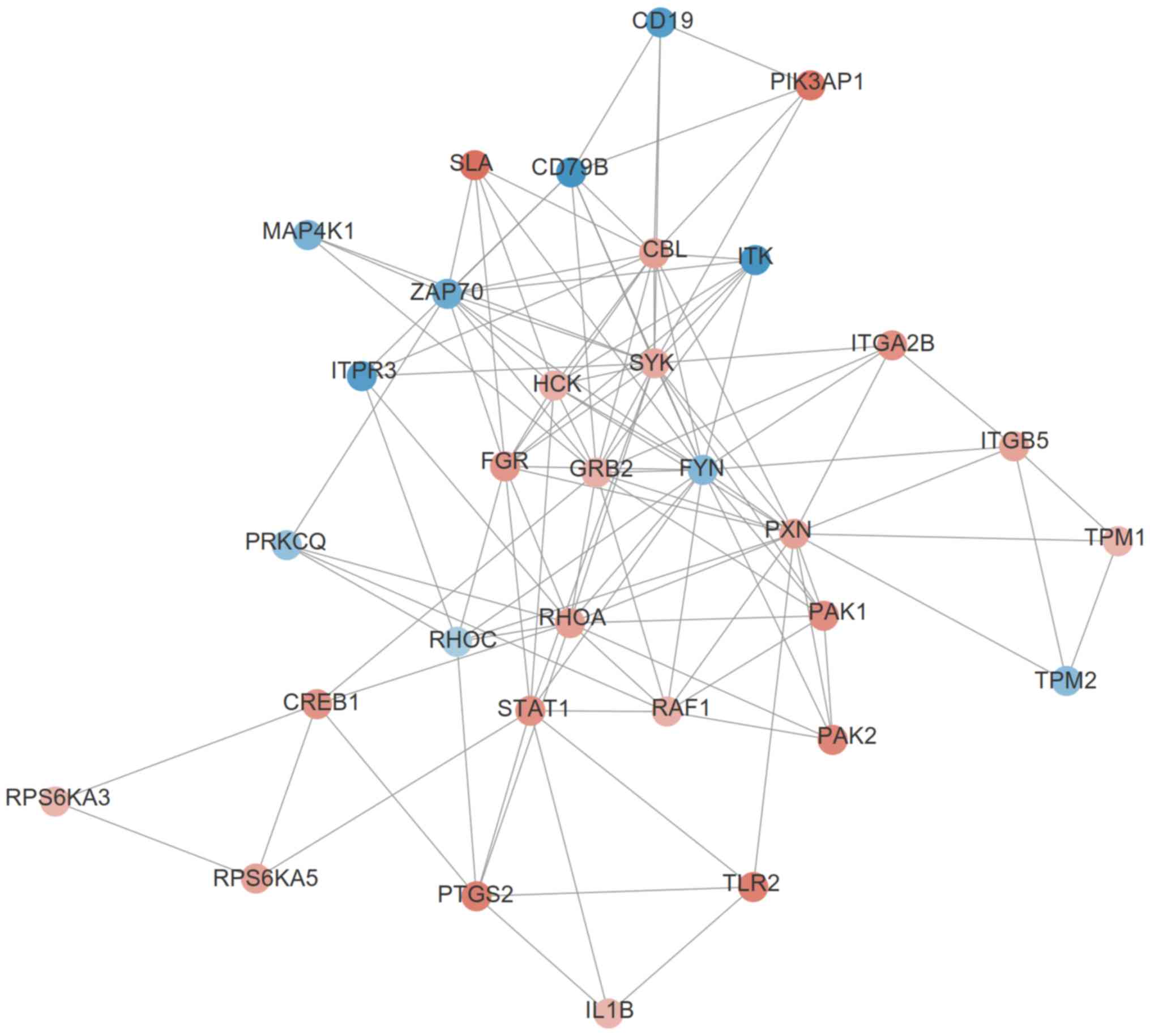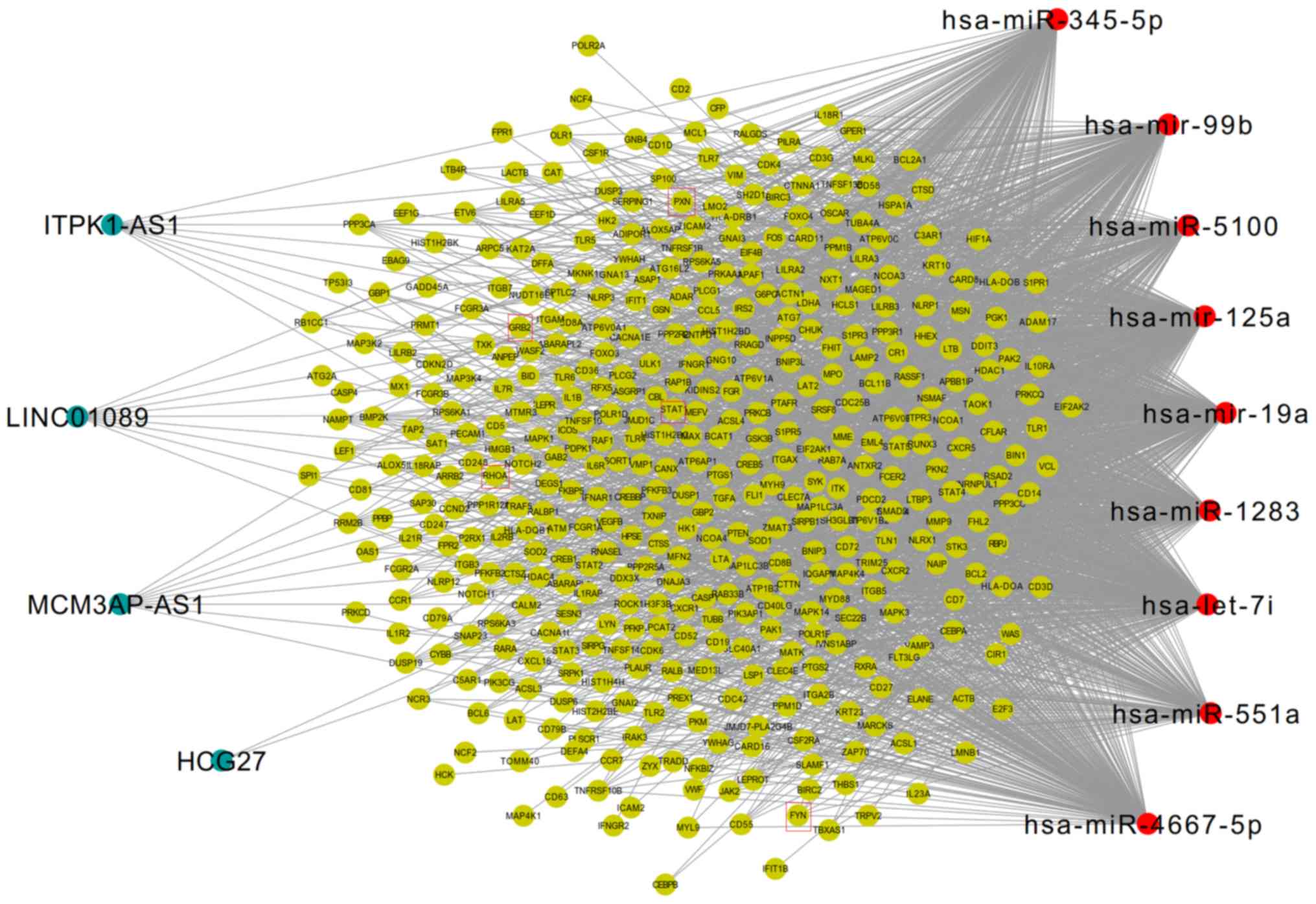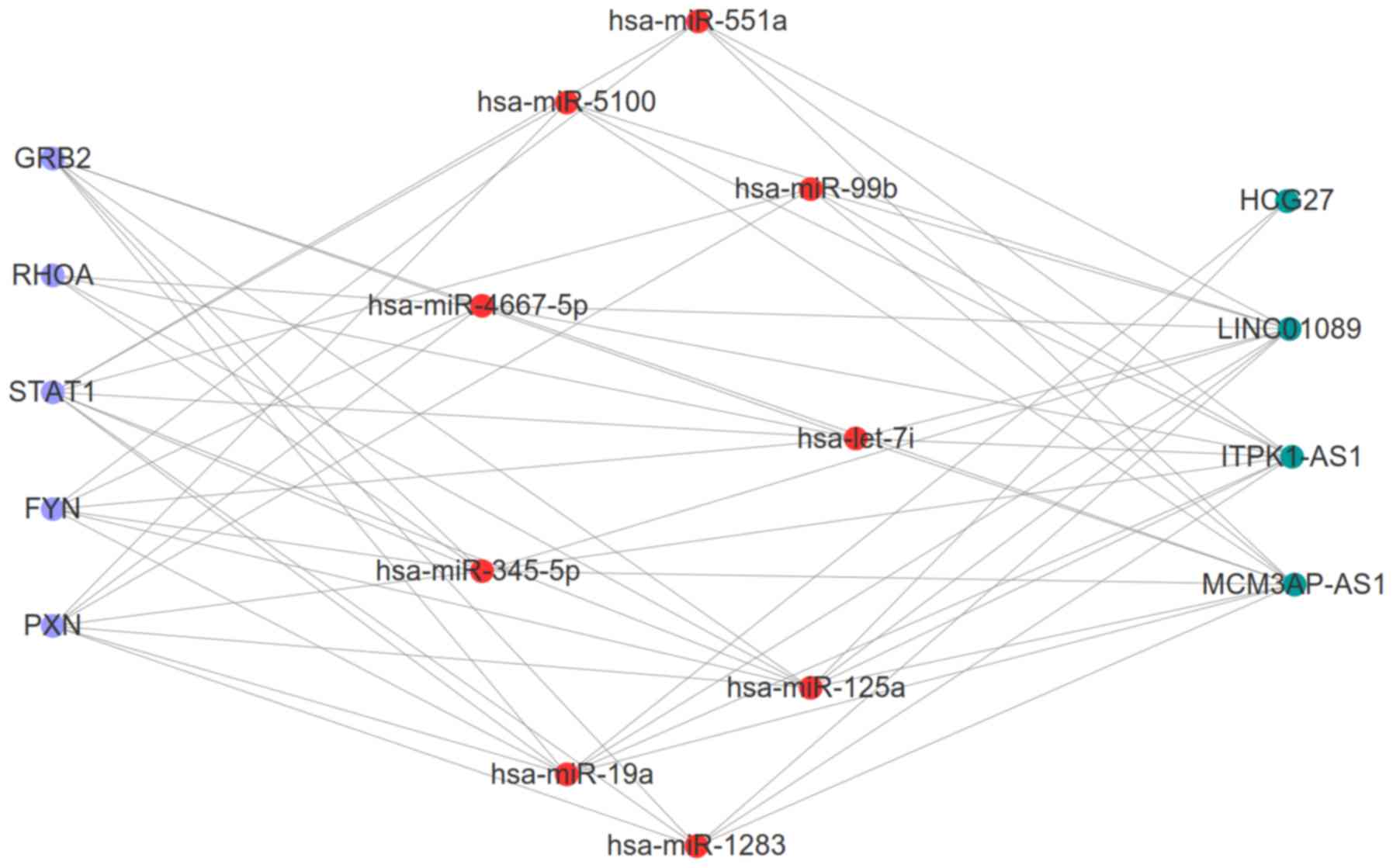|
1
|
Feigin VL, Forouzanfar MH, Krishnamurthi
R, Mensah GA, Connor M, Bennett DA, Moran AE, Sacco RL, Anderson L,
Truelsen T, et al: Global and regional burden of stroke during
1990–2010: Findings from the Global Burden of disease study 2010.
Lancet. 383:3081–255. 2014. View Article : Google Scholar
|
|
2
|
Boldsen JK, Engedal TS, Pedraza S, Cho TH,
Thomalla G, Nighoghossian N, Baron JC, Fiehler J, Østergaard L and
Mouridsen K: Better diffusion segmentation in acute ischemic stroke
through automatic tree learning anomaly segmentation. Front
Neuroinform. 12:212018. View Article : Google Scholar : PubMed/NCBI
|
|
3
|
Cassella CR and Jagoda A: Ischemic Stroke:
Advances in diagnosis and management. Emerg Med Clin North Am.
35:911–930. 2017. View Article : Google Scholar : PubMed/NCBI
|
|
4
|
Hasan TF, Rabinstein AA, Middlebrooks EH,
Haranhalli N, Silliman SL, Meschia JF and Tawk RG: Diagnosis and
management of acute ischemic stroke. Mayo Clin Proc. 93:523–538.
2018. View Article : Google Scholar : PubMed/NCBI
|
|
5
|
Adams BD, Parsons C, Walker L, Zhang WC
and Slack FJ: Targeting noncoding RNAs in disease. J Clin Invest.
127:761–771. 2017. View
Article : Google Scholar : PubMed/NCBI
|
|
6
|
Zhu M, Li N, Luo P, Jing W, Wen X, Liang C
and Tu J: Peripheral blood leukocyte expression of lncRNA MIAT and
its diagnostic and prognostic value in ischemic stroke. J Stroke
Cerebrovasc Dis. 27:326–337. 2017. View Article : Google Scholar : PubMed/NCBI
|
|
7
|
Feng L, Guo J and Ai F: Circulating long
noncoding RNA ANRIL downregulation correlates with increased risk,
higher disease severity and elevated pro-inflammatory cytokines in
patients with acute ischemic stroke. J Clin Lab Anal.
33:e226292019. View Article : Google Scholar : PubMed/NCBI
|
|
8
|
Deng QW, Li S, Wang H, Sun HL, Zuo L, Gu
ZT, Lu G, Sun CZ, Zhang HQ and Yan FL: Differential long noncoding
RNA expressions in peripheral blood mononuclear cells for detection
of acute ischemic stroke. Clin Sci. 132:1597–1614. 2018. View Article : Google Scholar : PubMed/NCBI
|
|
9
|
Sheng Y, Ma J, Zhao J, Qi S, Hu R and Yang
Q: Differential expression patterns of specific long noncoding RNAs
and competing endogenous RNA network in alopecia areata. J Cell
Biochem. 120:10737–10747. 2019. View Article : Google Scholar : PubMed/NCBI
|
|
10
|
Guo X, Yang J, Liang B, Shen T, Yan Y,
Huang S, Zhou J, Huang J, Gu L and Su L: Identification of novel
LncRNA biomarkers and construction of LncRNA-related networks in
Han Chinese patients with ischemic stroke. Cell Physiol Biochem.
50:2157–2175. 2018. View Article : Google Scholar : PubMed/NCBI
|
|
11
|
He W, Wei D, Chen S, Li S and Chen W:
Altered long non-coding RNA transcriptomic profiles in ischemic
stroke. Hum Gene Ther. 29:719–732. 2017. View Article : Google Scholar
|
|
12
|
Tiedt S, Prestel M, Malik R,
Schieferdecker N, Duering M, Kautzky V, Stoycheva I, Böck J,
Northoff BH, Klein M, et al: RNA-Seq identifies circulating
miR-125a-5p, miR-125b-5p and miR-143-3p as potential biomarkers for
acute ischemic stroke. Circ Res. 121:970–980. 2017. View Article : Google Scholar : PubMed/NCBI
|
|
13
|
Tian C, Li Z, Yang Z, Huang Q, Liu J and
Hong B: Plasma MicroRNA-16 is a biomarker for diagnosis,
stratification, and prognosis of hyperacute cerebral infarction.
PLoS One. 11:e01666882016. View Article : Google Scholar : PubMed/NCBI
|
|
14
|
Jickling GC, Ander BP, Xinhua Z, Dylan N,
Boryana S and Dazhi L: microRNA expression in peripheral blood
cells following acute ischemic stroke and their predicted gene
targets. PLoS One. 9:e992832014. View Article : Google Scholar : PubMed/NCBI
|
|
15
|
Ritchie ME, Phipson B, Wu D, Hu Y, Law CW,
Shi W and Smyth GK: Limma powers differential expression analyses
for RNA-sequencing and microarray studies. Nucleic Acids Res.
43:e472015. View Article : Google Scholar : PubMed/NCBI
|
|
16
|
Chen S, Yanqing Z, Yaru C and Jia G:
Fastp: An ultra-fast all-in-one FASTQ preprocessor. Bioinformatics.
34:i884–i890. 2018. View Article : Google Scholar : PubMed/NCBI
|
|
17
|
Li B and Dewey CN: RSEM: Accurate
transcript quantification from RNA-Seq data with or without a
reference genome. BMC Bioinformatics. 12:3232011. View Article : Google Scholar : PubMed/NCBI
|
|
18
|
Szklarczyk D, Franceschini A, Wyder S,
Forslund K, Heller D, Huerta-Cepas J, Simonovic M, Roth A, Santos
A, Tsafou KP, et al: STRING v10: Protein-protein interaction
networks, integrated over the tree of life. Nucleic Acids Res.
43((Database Issue)): D447–D452. 2015. View Article : Google Scholar : PubMed/NCBI
|
|
19
|
Tang Y, Li M, Wang J, Pan Y and Wu FX:
CytoNCA: A cytoscape plugin for centrality analysis and evaluation
of protein interaction networks. Biosystems. 127:67–72. 2015.
View Article : Google Scholar : PubMed/NCBI
|
|
20
|
Bader GD and Hogue CW: An automated method
for finding molecular complexes in large protein interaction
networks. BMC Bioinformatics. 4:22003. View Article : Google Scholar : PubMed/NCBI
|
|
21
|
Ashwini J, Marks DS and Erik L: miRcode: A
map of putative microRNA target sites in the long non-coding
transcriptome. Bioinformatics. 28:2062–2063. 2012. View Article : Google Scholar : PubMed/NCBI
|
|
22
|
Li JH, Liu S, Zhou H, Qu LH and Yang JH:
starBase v2.0: Decoding miRNA-ceRNA, miRNA-ncRNA and protein-RNA
interaction networks from large-scale CLIP-Seq data. Nucleic Acids
Res. 42((Database Issue)): D92–D97. 2014. View Article : Google Scholar : PubMed/NCBI
|
|
23
|
Paraskevopoulou MD, Georgakilas G,
Kostoulas N, Reczko M, Maragkakis M, Dalamagas TM and Hatzigeorgiou
AG: DIANA-LncBase: Experimentally verified and computationally
predicted microRNA targets on long non-coding RNAs. Nucleic Acids
Res. 41((Database Issue)): D239–D245. 2013. View Article : Google Scholar : PubMed/NCBI
|
|
24
|
Dweep H and Gretz N: miRWalk2. 0: A
comprehensive atlas of microRNA-target interactions. Nat Methods.
12:6972015. View Article : Google Scholar : PubMed/NCBI
|
|
25
|
Jin R, Liu L, Zhang S, Nanda A and Li G:
Role of inflammation and its mediators in acute ischemic stroke. J
Cardiovasc Transl Res. 6:834–851. 2013. View Article : Google Scholar : PubMed/NCBI
|
|
26
|
Dziedzic T: Systemic inflammation as a
therapeutic target in acute ischemic stroke. Expert Rev Neurother.
15:523–531. 2015. View Article : Google Scholar : PubMed/NCBI
|
|
27
|
Akella A, Bhattarai S and Dharap A: Long
noncoding RNAs in the pathophysiology of ischemic stroke.
Neuromolecular Med. 21:474–483. 2019. View Article : Google Scholar : PubMed/NCBI
|
|
28
|
Zhang X, Zhu XL, Ji BY, Cao X, Yu LJ,
Zhang Y, Bao XY, Xu Y and Jin JL: LncRNA-1810034E14Rik reduces
microglia activation in experimental ischemic stroke. J
Neuroinflammation. 16:752019. View Article : Google Scholar : PubMed/NCBI
|
|
29
|
Wang J, Zhao H, Fan Z, Li G, Ma Q, Tao Z,
Wang R, Feng J and Luo Y: Long noncoding RNA H19 promotes
neuroinflammation in ischemic stroke by driving histone deacetylase
1-Dependent M1 microglial polarization. Stroke. 48:2211–2221. 2017.
View Article : Google Scholar : PubMed/NCBI
|
|
30
|
Cao DW, Liu MM, Duan R, Tao YF, Zhou JS,
Fang WR, Zhu JR, Niu L and Sun JG: The lncRNA Malat1 functions as a
ceRNA to contribute to berberine-mediated inhibition of HMGB1 by
sponging miR-181c-5p in poststroke inflammation. Acta Pharmacol
Sin. 41:22–33. 2020. View Article : Google Scholar : PubMed/NCBI
|
|
31
|
Wang Y, Luo Y, Yao Y, Ji Y, Feng L, Du F,
Zheng X, Tao T, Zhai X, Li Y, et al: Silencing the lncRNA Maclpil
in pro-inflammatory macrophages attenuates acute experimental
ischemic stroke via LCP1 in mice. J Cereb Blood Flow Metab.
40:747–759. 2020. View Article : Google Scholar : PubMed/NCBI
|
|
32
|
Zhang K, Qi M, Yang Y, Xu P, Zhua Y and
Zhang J: Circulating lncRNA ANRIL in the serum of patients with
ischemic stroke. Clin Lab. 652019.doi:
10.7754/Clin.Lab.2019.190143.
|
|
33
|
Wang Y, Yang L, Chen T, Liu X, Guo Y, Zhu
Q, Tong X, Yang W, Xu Q, Huang D and Tu K: A novel lncRNA
MCM3AP-AS1 promotes the growth of hepatocellular carcinoma by
targeting miR-194-5p/FOXA1 axis. Mol Cancer Res. 18:282019.
View Article : Google Scholar
|
|
34
|
Sas-Chen A, Aure MR, Leibovich L, Carvalho
S, Enuka Y, Körner C, Polycarpou-Schwarz M, Lavi S, Nevo N,
Kuznetsov Y, et al: LIMT is a novel metastasis inhibiting lncRNA
suppressed by EGF and downregulated in aggressive breast cancer.
EMBO Mol Med. 8:1052–1064. 2016. View Article : Google Scholar : PubMed/NCBI
|
|
35
|
Hu Z, Yang D, Tang Y, Zhang X, Wei Z, Fu
H, Xu J, Zhu Z and Cai Q: Five-long non-coding RNA risk score
system for the effective prediction of gastric cancer patient
survival. Oncol Lett. 17:4474–4486. 2019.PubMed/NCBI
|
|
36
|
Yang C, Zheng J, Xue Y, Yu H, Liu X, Ma J,
Liu L, Wang P, Li Z, Cai H and Liu Y: The Effect of
MCM3AP-AS1/miR-211/KLF5/AGGF1 axis regulating glioblastoma
angiogenesis. Front Mol Neurosci. 10:4372017. View Article : Google Scholar : PubMed/NCBI
|
|
37
|
Ding H, Gao S, Wang L, Wei Y and Zhang M:
Overexpression of miR-582-5p inhibits the apoptosis of neuronal
cells after cerebral ischemic stroke through regulating
PAR-1/Rho/Rho Axis. J Stroke Cerebrovasc Dis. 28:149–155. 2019.
View Article : Google Scholar : PubMed/NCBI
|
|
38
|
Vesterinen HM, Currie GL, Carter S, Mee S,
Watzlawick R, Egan KJ, Macleod MR and Sena ES: Systematic review
and stratified meta-analysis of the efficacy of RhoA and Rho kinase
inhibitors in animal models of ischaemic stroke. Syst Rev.
2:332013. View Article : Google Scholar : PubMed/NCBI
|
|
39
|
Schultz NEØ, Hasseldam H, Rasmussen RS,
Vindegaard N, Mcwilliam O, Iversen HK and Johansen FF: Statin
treatment before stroke reduces pro-inflammatory cytokine levels
after stroke. Neurol Res. 41:289–297. 2019. View Article : Google Scholar : PubMed/NCBI
|
|
40
|
Fard MA, Ebrahimi KB and Miller NR: RhoA
activity and post-ischemic inflammation in an experimental model of
adult rodent anterior ischemic optic neuropathy. Brain Res.
1534:76–86. 2013. View Article : Google Scholar : PubMed/NCBI
|
|
41
|
Jin K, Mao X, Mw, Nagayama T, Minami M,
Simon R and Greenberg D: Microarray analysis of hippocampal gene
expression in global cerebral ischemia. Ann Neurol. 50:93–103.
2010. View Article : Google Scholar
|
|
42
|
He D, Zhuo Z, Lao J, Meng H, Han L, Fan C,
Dan Y, He Z and Yun X: Proteomic analysis of the Peri-infarct area
after human umbilical cord mesenchymal stem cell transplantation in
experimental stroke. Aging Dis. 7:623–634. 2016. View Article : Google Scholar : PubMed/NCBI
|
|
43
|
Hou YC, Liou KT, Chern CM, Wang YH, Liao
JF, Chang S, Chou YH and Shen YC: Preventive effect of silymarin in
cerebral ischemia-reperfusion-induced brain injury in rats possibly
through impairing NF-κB and STAT-1 activation. Phytomedicine.
17:963–973. 2010. View Article : Google Scholar : PubMed/NCBI
|
|
44
|
Xiang W, Tian C, Lin J, Wu X, Pang G, Zhou
L, Pan S and Deng Z: Plasma let-7i and miR-15a expression are
associated with the effect of recombinant tissue plasminogen
activator treatment in acute ischemic stroke patients. Thromb Res.
158:121–125. 2017. View Article : Google Scholar : PubMed/NCBI
|
|
45
|
Jickling GC, Ander BP, Shroff N, Orantia
M, Stamova B, Dykstra-Aiello C, Hull H, Zhan X, Liu D and Sharp FR:
Leukocyte response is regulated by microRNA let7i in patients with
acute ischemic stroke. Neurology. 87:2198–2205. 2016. View Article : Google Scholar : PubMed/NCBI
|
|
46
|
Franciska E, Thorsten T, Günter M and
Konstantin-A H: Immunohistochemical analysis of protein expression
after middle cerebral artery occlusion in mice. Acta Neuropathol.
107:127–136. 2004. View Article : Google Scholar : PubMed/NCBI
|
|
47
|
Liu J, Zhou CX, Zhang ZJ, Wang LY, Jing ZW
and Wang Z: Synergistic mechanism of gene expression and pathways
between jasminoidin and ursodeoxycholic acid in treating focal
cerebral ischemia-reperfusion injury. CNS Neurosci Ther.
18:674–682. 2012. View Article : Google Scholar : PubMed/NCBI
|
|
48
|
Tan JR, Tan KS, Yong FL, Armugam A, Wang
CW, Jeyaseelan K and Wong PT: MicroRNAs regulating cluster of
differentiation 46 (CD46) in cardioembolic and non-cardioembolic
stroke. PLoS One. 12:e01721312017. View Article : Google Scholar : PubMed/NCBI
|
|
49
|
Marie JC, Astier AL, Rivailler P,
Rabourdin-Combe C, Wild TF and Horvat B: Linking innate and
acquired immunity: Divergent role of CD46 cytoplasmic domains in T
cell induced inflammation. Nat Immunol. 3:659–666. 2002. View Article : Google Scholar : PubMed/NCBI
|
|
50
|
Du CP, Tan R and Hou XY: Fyn kinases play
a critical role in neuronal apoptosis induced by oxygen and glucose
deprivation or amyloid-β peptide treatment. CNS Neurosci Ther.
18:754–761. 2012. View Article : Google Scholar : PubMed/NCBI
|
|
51
|
Holmes A, Zhou N, Donahue DL, Balsara R
and Castellino FJ: A deficiency of the GluN2C subunit of the
N-methyl-D-aspartate receptor is neuroprotective in a mouse model
of ischemic stroke. Biochem Biophys Res Commun. 495:136–144. 2018.
View Article : Google Scholar : PubMed/NCBI
|
|
52
|
Lopes F, Wang A, Smyth D, Reyes JL,
Doering A, Schenck LP, Beck P, Waterhouse C and McKay DM: The Src
kinase Fyn is protective in acute chemical-induced colitis and
promotes recovery from disease. J Leukoc Biol. 97:1089–1099. 2015.
View Article : Google Scholar : PubMed/NCBI
|
|
53
|
Maitrias P, Metzinger-Le Meuth V, Massy
ZA, M'Baya-Moutoula E, Reix T, Caus T and Metzinger L: MicroRNA
deregulation in symptomatic carotid plaque. J Vasc Surg.
62:1245–1250.e1. 2015. View Article : Google Scholar : PubMed/NCBI
|
|
54
|
Kumar M and Nerurkar VR: Integrated
analysis of microRNAs and their disease related targets in the
brain of mice infected with West Nile virus. Virology.
452-453:143–151. 2014. View Article : Google Scholar : PubMed/NCBI
|















